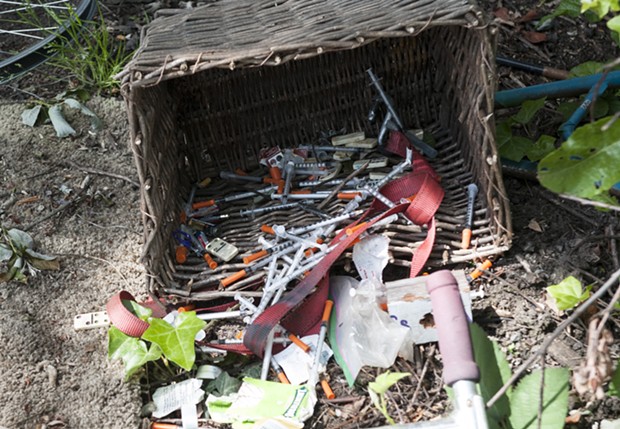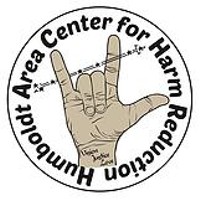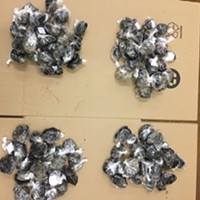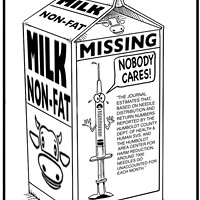Needles, Needles, Needles
The problem is pointedly obvious, but solutions remain elusive
By Kimberly Wear [email protected] @kimberly_wear[
{
"name": "Top Stories Video Pair",
"insertPoint": "7",
"component": "17087298",
"parentWrapperClass": "fdn-ads-inline-content-block",
"requiredCountToDisplay": "1"
}
]
The stark reality of the local heroin epidemic spilled into the streets of Eureka last spring when the public restrooms in Old Town overflowed, clogged with thousands of syringes and other paraphernalia that had been stuffed down the toilet.
Located near the gazebo in the heart of city's tourism zone, the bathrooms have long been a gathering spot for those caught in the throes of addiction, leaving their marks in the spoons, tinfoil, straps and needles left behind — sometimes even stashed inside of the seat cover dispensers.
The bathrooms have been snaked three times this year to prevent a repeat of the flood, while another facility at the city's boat launch has undergone the same process at a rate more than double that in the same span.
But these two epicenters of drug use and the resulting waste are anything but an anomaly, according to Parks and Recreation Director Miles Slattery. The problem, he says, is rampant across Eureka.
Countywide, needle exchange programs run by the Humboldt Area Center for Harm Reduction and the county Department of Health and Human Services combined to give out more than 425,000 needles through the first half of 2017. Even with the approximately 90 percent return rate that both groups report, that leaves some 7,000 needles unaccounted for each month.
And the needles that do end up abandoned in alleys, tossed away in parks and strewn along the city's waterfront by the hundreds each week are not just bleak symbols of region's opioid crisis but a rallying cry for frustrated community members reaching a breaking point.
Slattery says discarded needles have long been an issue for his department but the numbers are increasing noticeably. He estimates some 1,000 are collected by parks and rec workers along the waterfront each week, with another 400 to 500 culled from the city's parks and open spaces.
"We're seeing a significant amount of them everywhere and it's gotten worse," Slattery says.
The problem has ignited a public backlash, mainly aimed at the Humboldt Area Center for Harm Reduction, at one point prompting the nonprofit to pull volunteers from its regular needle collections due to what the center described as "harassment and violence."
Eureka is hardly alone. Cities up and down the state, across the nation and around the world are grappling with the same problem and the same frustrations. But the pressing question — with no easy answer — is what can be done?
Earlier this month, Eureka City Councilmember Kim Bergel suggested enacting an ordinance that would require any exchange programs operating within city limits to participate in a "track and trace" system — similar to requirements on cannabis growers and distributers.
That could include having each program use some sort of color coding or other method that would differentiate where the needles originated. Bergel also proposed having the city provide strategically placed kiosks for the safe disposal of the needles.
Voicing support for the staff direction at the Oct. 3 meeting were councilmembers Natalie Arroyo, saying she wanted to hear more about the issue in general, and Austin Allison, commenting that "there's something going wrong with the needle return and exchanges."
For now, city staff are in the early stages of exploring the possibility of a tracking system and potential sites for disposal kiosks, Bergel notes in an interview with the Journal this week.
"I don't know that you can ever have too many tools," she says. "It's not just one thing that's going to fix this. ... I just really feel like it needs to get to a place where things are traceable."
Bergel says the needle issue is reaching a febrile pitch with community members feeling under siege by the scourge of the epidemic that's invading their yards, playgrounds and greenbelts.
She points to a recent conversation she had with concerned residents on the Eureka Neighborhood Watch Facebook page that not only showed the mounting frustration over the proliferation of drug paraphernalia but also revealed several good ideas — like having local programs buy syringes with retractable needles.
"We all want same thing: a safe place to live and a safe place to raise our kids in a thriving community, but we may have different ways of doing that — so discussing that is huge," Bergel says.
Enter the programs now caught in the crossfire of community ire. Not only are they working to provide sterile needles to stem the spread of diseases, but they also often act as a first point of contact to steer clients toward treatment.
"Our Syringe Exchange and Disposal Program staff meets with people around the county to offer an opportunity to safely dispose of syringes," says DHHS Deputy Director of Public Health Lara Weiss. "While providing clean syringes helps people avoid contracting diseases like HIV and hepatitis C, we also promote safe disposal of syringes. We offer various sizes of sharps containers with each exchange and encourage safe disposal."
It's no secret that Humboldt County — like much of the nation — is facing an opioid crisis. The local overdose rate is four times higher than the state average with 26 people succumbing to the drug here in 2016 — an average of one death every 14 days.
That's not to mention the other related health issues.
The county Department of Health and Human Services puts the local rate of the liver-attacking Hepatitis C infection — passed via contaminated blood, often through shared needles — at approximately 5 percent of the area's population or five times the state and national rates.
But officials with the two main exchange programs in Eureka — DHHS and the Humboldt Area Center for Harm Reduction — say a track and trace system is not the answer. Not only would the program be costly and cumbersome but the effort would also unnecessarily divert funds to address the approximately 10 percent of needles that are unaccounted for without much in return.
"It doesn't seem like a feasible way of combatting the problem. People can get syringes anywhere," says Weiss in an email to the Journal, noting needles are legal in many states and can also be purchased online and in stores.
"As far as we know, all the syringes coming to users in the community look the same. To mark each needle would take quite a bit of time and resources," she writes. "It also won't help get them off the street. DHHS is working with local jurisdictions and communities to make disposal kiosks available in key areas as well as engaging in a community education campaign to raise awareness about safe disposal."
Brandie Wilson, HACHR's executive director, voiced similar sentiments but says the nonprofit, which distributed 296,083 syringes between January and May and received 256,176 back — a return rate of about 86.5 percent — is always open to new ideas.
The program does regular cleanups in Eureka and Arcata and will respond to pick up needles on request, she says.
"If the goal is to reduce the number of syringes, then we need to look at things that have really accomplished that, not policies that have never been successful in reducing litter," Wilson says in an email. "If we are looking to reduce syringe litter, it's best to use research and speak with those who are doing the work."
Possible solutions include increasing disposal options — something HACHR has been pursuing since last year and the county is also working on — as well as exchange hours and education about how exchanges work and disposal practices.
"We are happy to have conversations and discuss evidence based strategies to reducing syringe litter," Wilson says.
Statistics provided by DHHS do show a sizable jump in the number of syringes being distributed by the county's syringe services program between 2015 and September of this year, although not all of those were issued in Eureka.
DHHS's distribution rate has jumped from an average of 7,422 a month in 2015 to 19,973 per month so far this year. The numbers of needles returned also fluctuated widely, with 96 percent to 112 percent coming back in 2015 as opposed to a swing of 61 percent to 171 percent in the first nine months of 2017.
Overall, the county reports an average needle exchange rate of 91 percent, which is similar to the numbers reported by HACHR between January and May of this year.
According to DHHS, public health syringes are distributed in pre-packaged “Poly-Pacs,” which come in sets of 10. There are currently no limits on the number of syringes an individual can receive from the county’s program, but the amount is usually based on how many were brought in for exchange.
If a person does not bring in needles for exchange, he or she can receive a limited number immediately but is told more will be available when the used ones are returned, according to the county. Kits with safe injection supplies are also provided.
Wilson says HACHR does not have a “flat, across-the-board” exchange policy but uses “more of a case-by-case mode, while also utilizing the guidelines of the California State Office of AIDS for syringe exchange programs operating in California.”
“We have people on exchange policies ranging from 1:1 to needs-based,” she writes. “The policy … depends on many factors, heavily depending on their return rate. Being in a rural area allows us the benefit of taking the needed time with each person.”
Wilson also says workers take time to individually assess how many syringes a person might need while also talking to him or her about disposal methods and options, noting “each person’s needs and level of engagement are different.”
Meanwhile, the Eureka Police Department is once again responding to calls for syringe pickups in response to community and business concerns after ending the assistance two years ago due to budget cuts.
"EPD strives to be a service-driven department and we felt it was important to bring back this quality of life service," says Brittany Powell, the department's public relations officer.
She says the service averaged about 15 calls a month — ranging from a single needle found on the sidewalk to a business reporting that, over time, it had collected a container full of them — before it was discontinued.
Since starting back up again at the beginning of the month, Powell says there have been few calls but she expects that number to rise as people become aware of the option.
“Once a call is received to pick up a needle(s), it will be assigned to the officer working in that beat,” she says in an email. “The response depends on other call priorities so it is likely there will be a delay. It is important for the caller to express any exigent circumstances (uncapped needle near a park or school).”
Slattery, Eureka's parks director, says he certainly sees needle disposal bins as an option to help combat the plight of discards.
"I think the biggest issue is going to NIMBY-ism and the concern about the message we're sending when putting these up in public spaces," Slattery says, adding that he questions whether the disposal bins would be used.
He also suggests that needle exchanges should have requirements like those placed on mattress and television manufacturers to take responsibility for the proper disposal of their products.
"We should treat needles the same way with product stewardship. If you are handing out needles, you need to make sure that they are coming back," Slattery says.
In the meantime, Bergel says the community needs to be able to come together to have open, frank and, most importantly, respectful conversations about finding solutions.
"Let's be mad at the problem, not the people who have different opinions," she says. "That just my take."
Kimberly Wear is the assistant editor and a staff writer at the Journal. Reach her at 442-1400, extension 323, or [email protected]. Follow her on Twitter @kimberly_wear.
Comments (4)
Showing 1-4 of 4
more from the author
-
Dust to Dust
The green burial movement looks to set down roots in Humboldt County
- Apr 11, 2024
-
Our Last Best Chance
- Apr 11, 2024
-
Judge Rules Arcata Can't Put Earth Flag on Top
- Apr 5, 2024
- More »
Latest in News
Readers also liked…
-
Through Mark Larson's Lens
A local photographer's favorite images of 2022 in Humboldt
- Jan 5, 2023
-
'To Celebrate Our Sovereignty'
Yurok Tribe to host gathering honoring 'ultimate river warrior' on the anniversary of the U.S. Supreme Court ruling that changed everything
- Jun 8, 2023








































